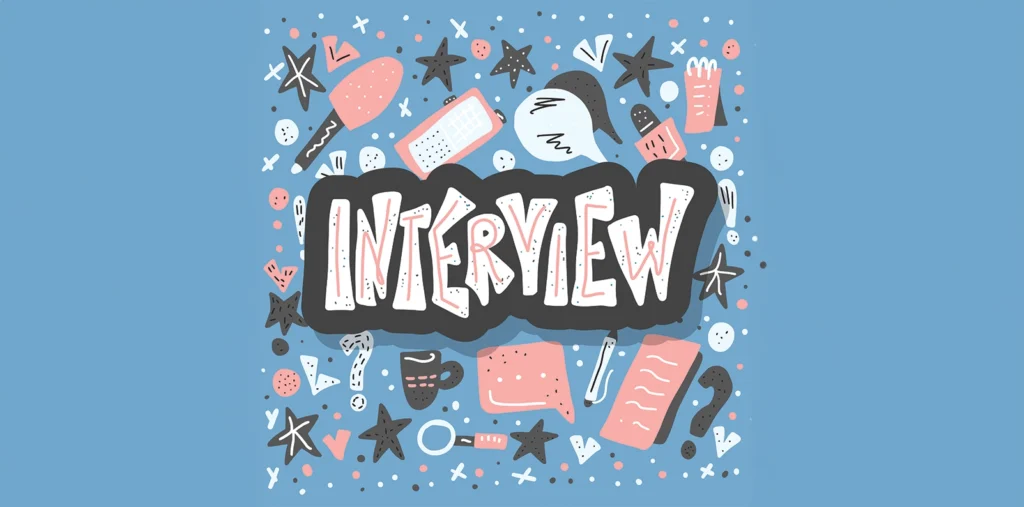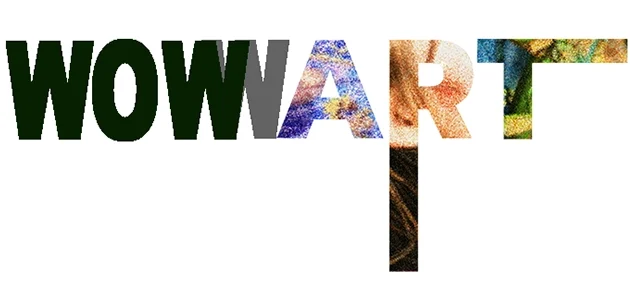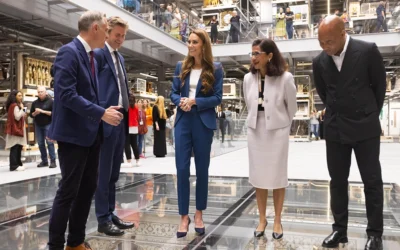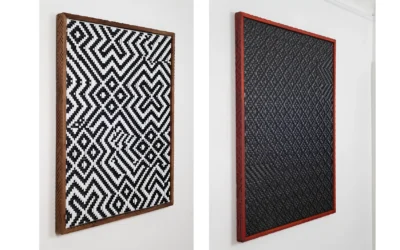Hunter Stabler – Navigating the Cosmic Play
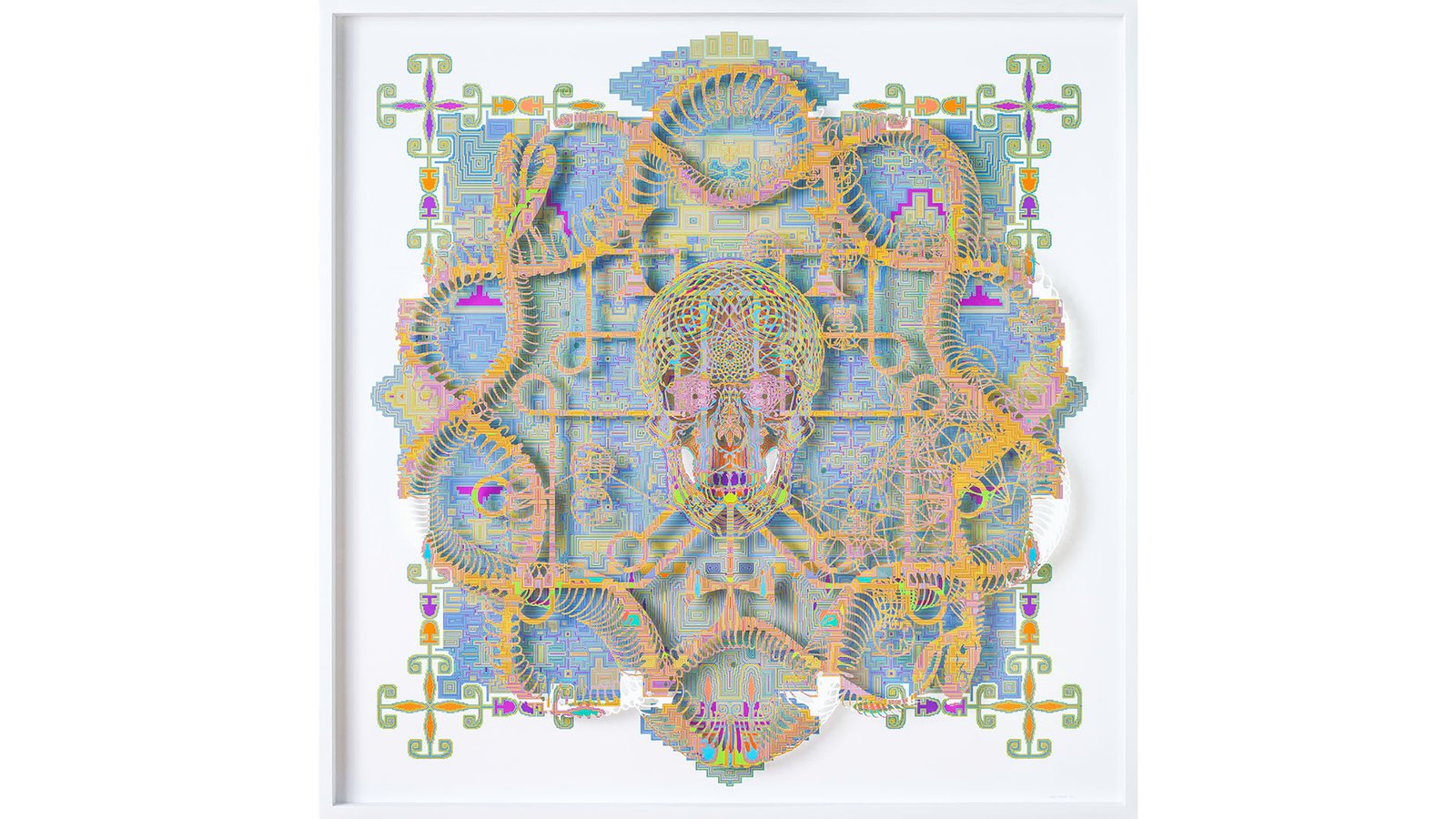
Exploring the intersections of paranoia, esotericism, and the evolution of artistic expression
Hunter Stabler discusses his artistic evolution from hand-cut paper to digital art, exploring themes of conspiracy, mysticism, and societal collapse while reflecting on personal experiences and influences.
In the vibrant tapestry of contemporary art, few voices resonate as uniquely as that of Hunter Stabler. A multidisciplinary artist based in Philadelphia, Stabler masterfully blends traditional craftsmanship with modern digital techniques, creating a body of work that defies easy categorization. His artistic journey is one of evolution, reflecting a deep engagement with themes of accessibility, alienation, and the interplay of manual and digital aesthetics. From his hand-cut paper creations to his explorations of esotericism and political paranoia, Stabler’s pieces invite viewers into a rich dialogue that is both visually stunning and intellectually provocative.
Stabler’s work has graced esteemed venues across the United States and beyond, including notable exhibitions at the Morbid Anatomy Museum and the Shelburne Art Museum. His hand-cut paper art has not only captivated audiences but also found a home in prestigious publications, earning acclaim for its intricate design and conceptual depth. With a background that traverses the landscapes of South Carolina to the urban culture of Philadelphia, Stabler’s perspective is informed by a diverse array of experiences, all of which converge in his thought-provoking creations. As he deftly navigates the realms of conspiracy, mysticism, and the absurdities of modern life, Stabler challenges us to reconsider our own narratives and the systems that shape them. This exclusive interview with Hunter Stabler unveils the intricate layers of his artistic practice, offering insight into the mind of a truly innovative creator.
Hunter Stabler’s innovative approach to art challenges conventions, inviting deep reflection on complex themes while showcasing exceptional craftsmanship and creativity.
How has your upbringing in South Carolina influenced your artistic perspective or themes in your work?
I always wanted to get out of there to a big city around other artists, institutions, and art culture. Now I really want to move rural and have more connection to my food in a homesteading/permaculture situation. Life has an interesting way of nudging us to react to different things at different times. Often my artistic perspectives become inversions of my previous perspectives. In this cosmic play, we are continually humbled by reality to embody things we were previously judgmental about.
Can you describe the evolution of your artistic style, especially as you’ve moved from painting to hand-cut paper art and digital art?
I think we exist in a Gnostic allegory where we are taught lessons through humiliation and humbling. My early work was very focused on hand-made crafts and was very anti-digital. But later I started to see the computer as just another tool. Then I injured my hands from cutting so much paper, so it really forced me much further into the digital imaging and fabrication world.
Your work engages with complex themes like conspiracy theories, political paranoia, and esotericism. What sparked your interest in these areas, and how do they shape your creative process?
I’ve always been suspicious of orthodoxy and authority. I had a really impactful dream, or nightmare about this sphere crashing in front of me and a self-inflating alien warned me that “They killed JFK, and they would kill me too.” I took that as a subliminal sign to look into the assassination and the nefarious things the CIA does. I was interested in esoteric themes as a reaction against scientific materialism and against the prevailing identity politics within the art community. Esotericism and deep politics collide when you learn about both Crowley and John Dee being spies. Manson and Donald DeFreeze in the same prison psychiatry program is interesting too. Now that MKULTRA has been rolled out society-wide in the form of mass media and social media, it’s hard to not be focused on mind control, or narrative control.
How do you approach creating your intricate cut-paper works, and what does the process look like from conceptualization to completion?
I don’t hand-cut paper anymore. I gave myself severe tendinitis from doing it too much. My process included drawing out everything beforehand. I would come up with a general idea, but do a lot of improvisation of the patterning and details as I was drawing. I would often scan hand-drawn portions and mirror them in Photoshop, print them back out and trace them back onto my drawing. Once I finished the drawing, I would cut the paper with a number 11 X-acto knife, replacing the blade frequently.
With influences ranging from canonical to contemporary ideas of spatiality, how do you achieve a balance between illusion and actual space in your pieces?
I am not sure if I achieved a balance. Space and the illusion of space is just something I am interested in within 2D art. I like to play with stuff that is flat and looks flat and at the same time is flat and looks spatial. The optical illusion of 3D space in 2D art is an old game, but still a fascinating one. I like to combine that game with modernist ideas of non-pictorial space. I really like jarring and confusing optics where you can’t tell what is going on directly in front of your eyes. I also have been into making stuff that glitches screens when you try to photograph or film it and view it on a tiny phone screen or laptop.
Your sculptures hint at narratives around “preparedness and paranoia.” What messages or questions are you hoping to convey through these semi-functional, two-faced objects?
I am definitely not the type of artist with a concise message they are trying to convey to the audience. I prefer being poetic and cryptic. I have ways of drawing/painting/making that I find beautiful, interesting, stimulating, challenging and gratifying. Within these art objects are hints about things I find interesting, profound, or funny. I like Andy Kaufman or Frank Zappa as examples of figures who can exist within a cultural milieu while simultaneously parodying and lambasting it. Going into 2012, it was perhaps politically expedient for artists or liberal class academics to make fun of preppers. I definitely wasn’t approaching those sculptures to make fun of preppers, but rather to highlight them as a cultural phenomenon that I was interested in. I was interested in its implication about impending doom and societal collapse. I think after the lockdowns in 2020 and supply chain disruptions, a lot of people finally understood what the preppers were paranoid about. Now we’ve just had Hurricane Helene devastate two towns I used to live in, Marshall, NC and Swannanoa, NC. Preparedness seems prudent in today’s world.
EDITOR’S HIGHLIGHTS
Empowering Art & Artists Globally
“Being featured in WOWwART means gaining visibility not just in print edition, but across the entire media spectrum in the US, UK, Europe and beyond”
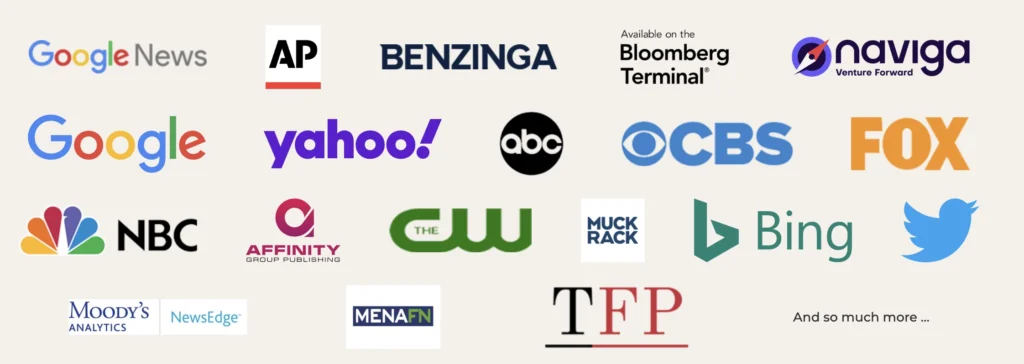
EDITOR’S HIGHLIGHTS
Media, Art and Artist
Media is a powerful tool to build relationships, boost visibility, influence decisions, and create lasting impressions for success and growth.
